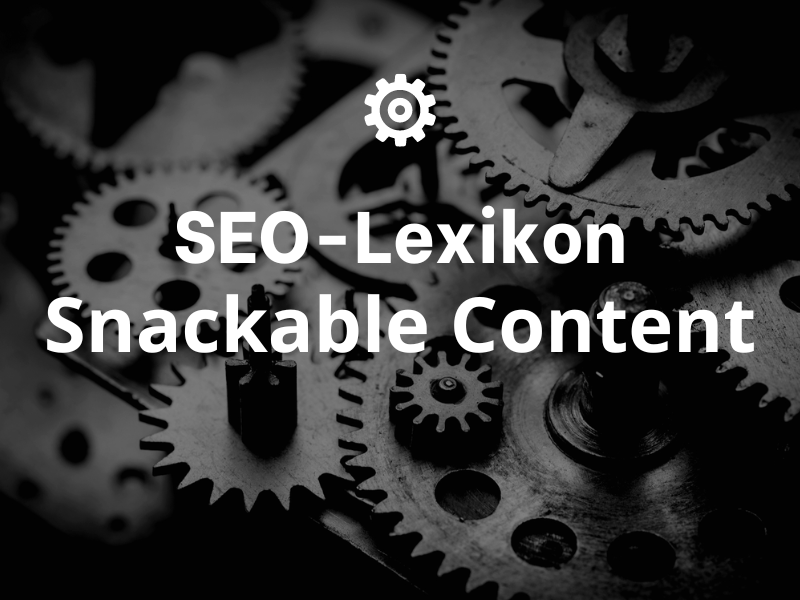Definition
Snackable Content is a term used to describe content that is simple, entertaining, and easy to digest. It is designed to be broken down into small chunks that are easy to consume. The content can be in the form of images, videos, text, audio, and even animated content.
Advantages
One of the biggest advantages of Snackable Content is that it can be consumed quickly and easily. It's also a great way to quickly capture the attention of the target audience to erlangen and entertain them at the same time. For companies, it's an effective way to get their message across quickly without boring the target audience.
Disadvantages
A disadvantage of Snackable Content is that it may not create a strong bond between the company and the audience. Since the content is consumed in short chunks, it doesn't necessarily keep the target audience engaged with the company for a longer period of time.
Use cases
Snackable Content is best suited for social media campaigns that require quick responses. Companies can also use this content on their websites or blogs to draw readers' attention to specific products or services.
Example 1: A company can use short videos to promote its products. These videos can be shared on various social media platforms to attract the attention of the target audience.
Example 2: A blogger can Snackable Content use to entertain its readers while providing valuable information. For example, short, entertaining videos can be used to inform the target audience about a particular topic.
Examples of snackable content
Snackable Content refers to content that is easy to consume, engaging, and quick to digest. Here are some examples of Snackable Content:
- Infographics: An infographic is a visual representation of information or data that presents complex information in a simple and engaging way. For example, an infographic can summarize facts and statistics about a particular topic and present them in an easy-to-understand and engaging way.
- Short videos: Short videos that last less than a few minutes are great for use as Snackable Content. They can contain informative, entertaining or emotional content and are quick to consume. For example, TikTok videos, Instagram Reels, or YouTube Shorts are examples of short videos that are easy to consume.
- Memes and GIFs: Memes and animated GIFs are humorous or entertaining images that often go viral and are easily shared. They are usually easy to create and can be used to communicate feelings or reactions.
- Listicles: Listeicles are articles that present information in a list. They are easy to read and often provide valuable information in an easily digestible format. Examples of listicles are "Top 10 tips for a better work-life balance" or "5 things you need to know about the keto diet".
- Social media posts: Snackable Content can also be found in the form of short, concise social media posts that contain useful or interesting information. Examples include short quotes or tips shared on platforms such as Twitter, Facebook or LinkedIn.
- Image galleries or slideshows: An image gallery or slideshow is a collection of images that are thematically or visually related and provide the viewer with a quick overview of a particular topic. For example, you could create an image gallery of stunning travel destinations or a slideshow of inspirational quotes.
- Quizzes and surveys: Interactive quizzes and surveys are a fun and engaging form of Snackable Contentwhere the user is directly involved. They offer quick information and only require a short time investment. For example, a quiz like "Which superhero are you?" or a survey like "What is your favorite movie genre?" could be easily consumable content.
All these examples of Snackable Content are easy to understand, engaging and quick to consume, making them ideal for social media distribution and increasing user engagement.
Conclusion
Snackable Content offers companies and bloggers an effective way to get their message across quickly. It is a great way to capture the attention of the target audience and entertain them at the same time. However, it may not create a strong bond between the company and the audience.
« Back to Glossary Index


